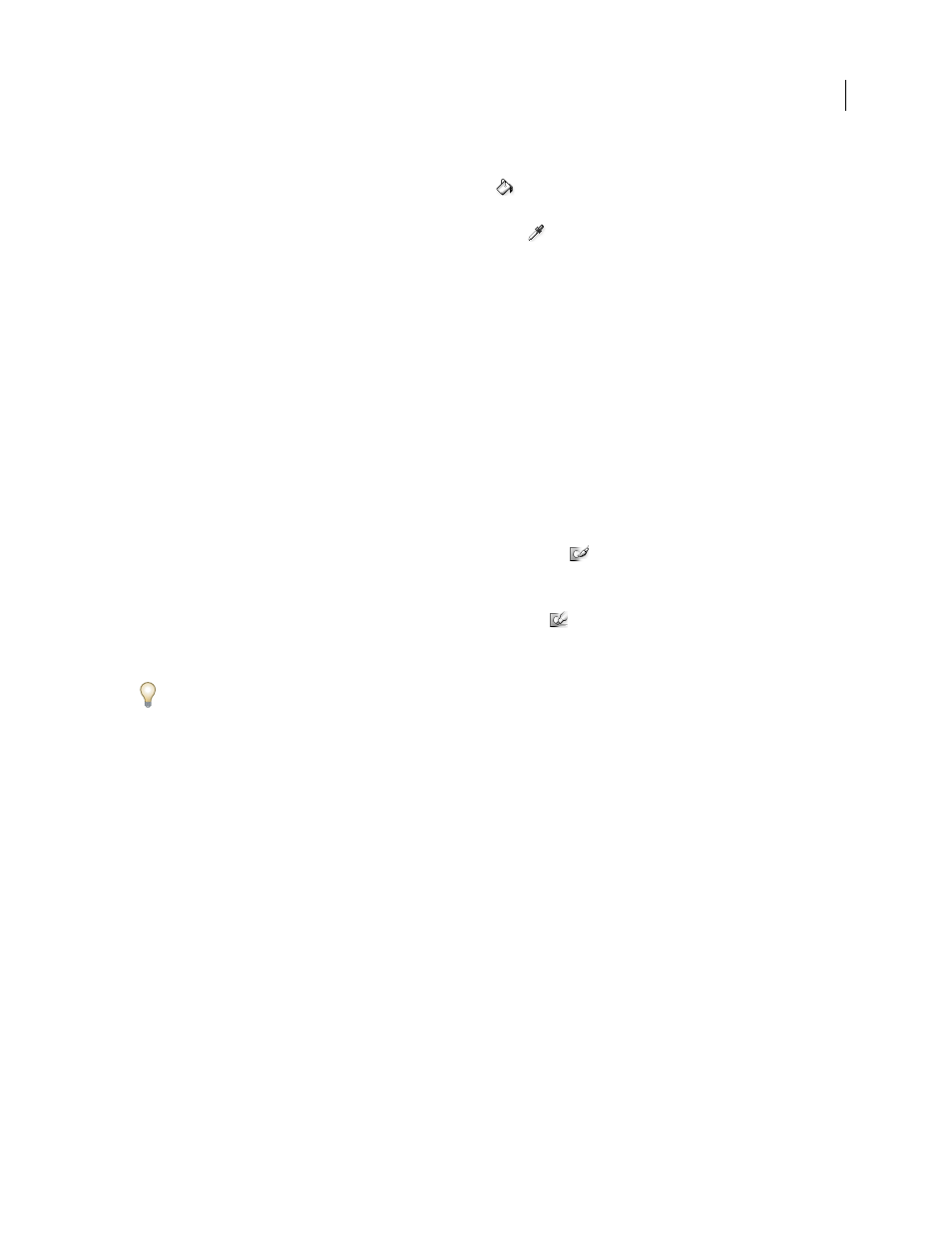Channels, About channels – Adobe Photoshop CS3 User Manual
Page 271

PHOTOSHOP CS3
User Guide
264
4
Define the foreground area by doing one of the following:
•
If the object has a well-defined interior, select the Fill tool
. Click inside the object to fill its interior. Clicking
a filled area again with the Fill tool removes the fill.
•
If you’ve selected Force Foreground, select the Eyedropper tool
, and click inside the object to sample the
foreground color, or click in the Color text box and use a color picker to select the foreground color. This technique
works best with objects that contain tones of a single color.
5
(Optional) Click Preview to preview the extracted object. Zoom in as needed.
Show
Choose a menu option to switch between views of the original and the extracted image.
Display
Choose a menu option to preview the extracted object against a colored matte background or a grayscale
background. To display a transparent background, choose None.
6
(Optional) Improve the extraction by doing one of the following:
•
Choose new Highlight and Fill options and draw again with the Edge Highlighter tool. Define the foreground area
once more, and then preview the extracted object.
•
Specify new Extraction settings (Smooth, Force Foreground, or Color) and then preview the extracted object.
When you are satisfied with the extraction, you can do the final touchups.
7
Touch up the extraction results by doing one of the following:
•
To erase background traces in the extracted area, use the Cleanup tool
. The tool subtracts opacity and has a
cumulative effect. You can also use the Cleanup tool to fill gaps in the extracted object. Hold down Alt (Windows)
or Option (Mac OS) while dragging to add back opacity.
•
To edit the edge of the extracted object, use the Edge Touchup tool
. The tool sharpens edges and has a
cumulative effect. If there is no clear edge, the Edge Touchup tool adds opacity to the object or subtracts opacity
from the background.
You can also clean up the image after an extraction by using the Background Eraser and History Brush tools in the
toolbox.
8
Click OK to apply the final extraction. On the layer, all pixels outside the extracted object are erased to trans-
parency.
See also
“Change pixels to transparent with the Background Eraser tool” on page 329
“Blend and fade filter effects” on page 386
Channels
About channels
Channels are grayscale images that store different types of information:
•
Color information channels are created automatically when you open a new image. The image’s color mode deter-
mines the number of color channels created. For example, an RGB image has a channel for each color (red, green,
and blue) plus a composite channel used for editing the image.
